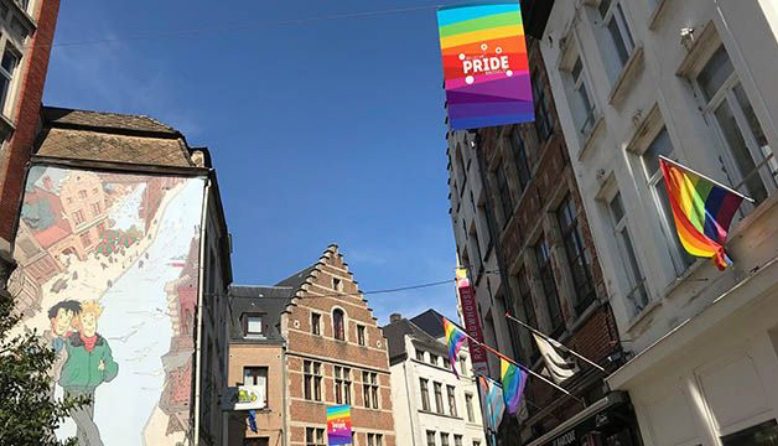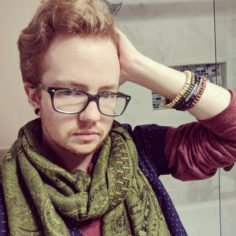The first gay bar I ever went to was in Serbia on my first trip abroad. It was 2015 and I was in Belgrade. In 2014, the city had held its first official Pride March after previous failed attempts. I have long forgotten the name of the bar, but it was a dark venue filled with flashing lights and fish tanks. Though I spoke no Serbian, there was a familiarity in the room, created perhaps by the small rainbow flags hiding behind the cash register. They let me know that out of all the city, this little corner offered a safe place to let my hair down.
While that bar did not hang a rainbow flag outside, I grew watchful as I traveled and looked for the small sign. The Gay Pride flag was created in 1978 by Gilbert Baker, and its rainbow colors have spread around the world since. Each stripe has its own meaning to represent each group within the LGBTQ community, and the colors come together to make a whole.
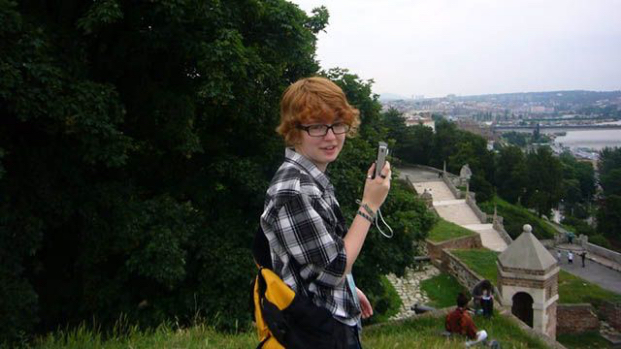
My favorite activity in a new place is to actively try and get myself lost. I wander the streets, turning down random side roads to see where they lead. This method is not advisable everywhere, but it has served me well. My favorite delight is when I stumble upon the dash of rainbow colors of the Gay Pride flag out in the wild. I love turning and finding a rainbow mural, a flag hanging in front of a bar, or a tiny tell-tale sticker in the corner of a shop or restaurant. I know who I can be in those spaces.
I first experienced the elation of spotting a flag in the wild when walking through Brussels. I’d gone down a few side streets and spotted a rainbow flag fluttering from a window of an apartment building. I became giddy, feeling my heart swell knowing that there were people like me here, enjoying their lives and thriving. I also stumbled upon a mural at the northern end of Stalingrad depicting a famous European cartoon character, walking arm in arm with a male friend.
I was scared to hold another man’s hand in public in my hometown, yet here the act was painted on the wall. And the mural had been there since 1991! I later learned how progressive Belgium was in this respect: in 2000, it became just the second country in the world to legalize same-sex marriage.
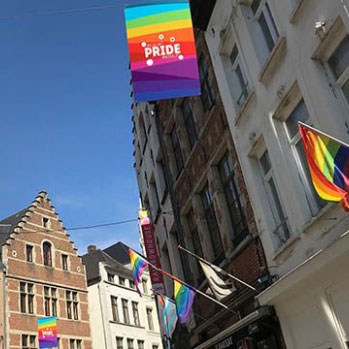
My favorite delight is when I stumble upon the dash of rainbow colors of the Gay Pride flag out in the wild.
Parrish Turner
My favorite activity in a new place is to actively try and get myself lost. I wander the streets, turning down random side roads to see where they lead. This method is not advisable everywhere, but it has served me well. My favorite delight is when I stumble upon the dash of rainbow colors of the Gay Pride flag out in the wild. I love turning and finding a rainbow mural, a flag hanging in front of a bar, or a tiny tell-tale sticker in the corner of a shop or restaurant. I know who I can be in those spaces.
I first experienced the elation of spotting a flag in the wild when walking through Brussels. I’d gone down a few side streets and spotted a rainbow flag fluttering from a window of an apartment building. I became giddy, feeling my heart swell knowing that there were people like me here, enjoying their lives and thriving. I also stumbled upon a mural at the northern end of Stalingrad depicting a famous European cartoon character, walking arm in arm with a male friend.
I became giddy, feeling my heart swell knowing that there were people like me here, enjoying their lives and thriving.
I was scared to hold another man’s hand in public in my hometown, yet here the act was painted on the wall. And the mural had been there since 1991! I later learned how progressive Belgium was in this respect: in 2000, it became just the second country in the world to legalize same-sex marriage.
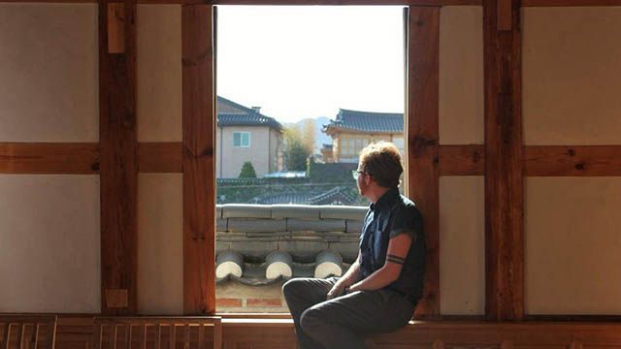
Wherever I’m traveling, I can learn a lot about a city’s relationship to its LGBTQ community by where I find the flag. In some cities, finding a rainbow is like playing “Where’s Waldo,” a game I have never been good at. Visiting Atlanta, I once went on a supply run for a party with some queer friends. They drove straight past two stores before stopping at one with a rainbow flag sticker in the window. They wanted to show their support for those who supported them.
“In some cities, finding a rainbow is like playing ‘Where’s Waldo,’ a game I have never been good at.”
Parrish Turner
Other cities have their pride built into their very architecture. Chicago’s Boystown was the first officially recognized gay village in the United States. With rainbow pylons lining the streets, the gayborhood has a Legacy Walk honoring over 30 LGBTQ heroes and a lively, inviting nightlife scene. The public acknowledgement of the LGBTQ community in the infrastructure of the city goes far in signaling to me that I can feel comfortable holding my boyfriend’s hand here.
Part of the reason I travel is because I want to learn and be reminded of how many different ways there are to exist in the world. I rarely go to gay bars where I live, but when I travel, they can often be the fastest way to learn about the local LGBTQ community. I go to be reminded of my own place in the world, and to remember that my way of life is not my only option. I am grateful for the opportunity to discover that again and again.
